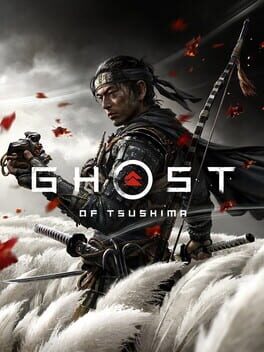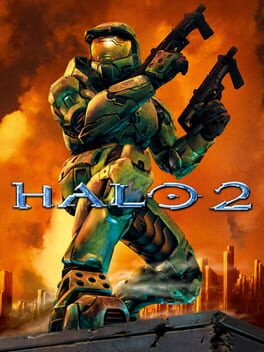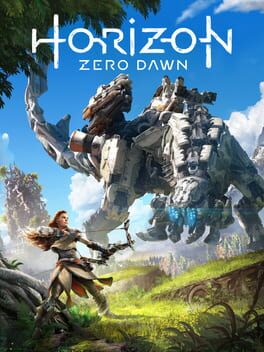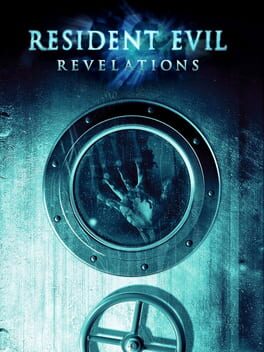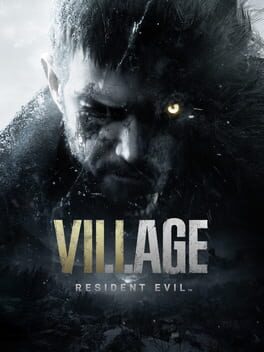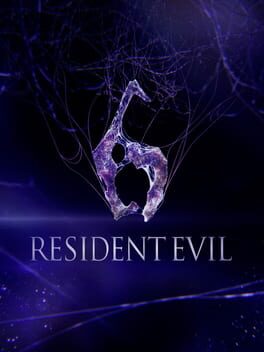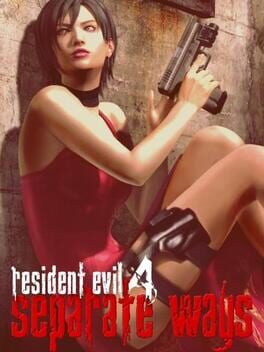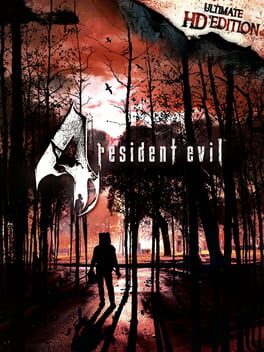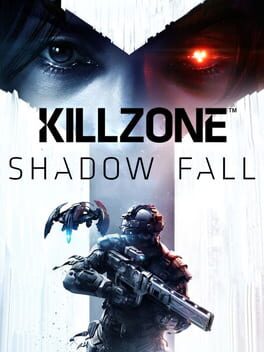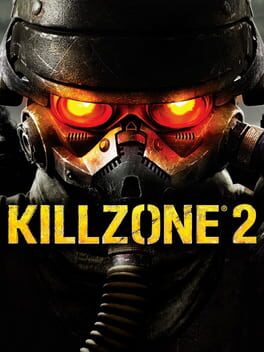Rebel_Notorious
BACKER
Bio
Nothing here!
Badges

N00b
Played 100+ games

1 Years of Service
Being part of the Backloggd community for 1 year

GOTY '23
Participated in the 2023 Game of the Year Event

Noticed
Gained 3+ followers

Roadtrip
Voted for at least 3 features on the roadmap
Favorite Games
105
Total Games Played
023
Played in 2024
122
Games Backloggd
Recently Played See More
Recently Reviewed See More
Do you remember when Call of Duty had an identity crisis during 2014-2018, before eventually returning to its roots with Modern Warfare (2019)? If you do, welcome to the game that it became.
Picking up 30 years after the end of the third game, we return to Vekta for the first time since the original game, but it looks a lot different. Now it's a bustling Sci-Fi utopia, except it's split down the middle. Half of the capital city is Vektan and the other half, the Helghast. Why? Well, that's all to do with how the last game ended.
Gone are the aesthetics of Helghan and hell, even the diverse biomes of Vekta from the first game, replaced by generic sterile futuristic cityscapes. As a launch title for the PS4, the game is impressive to look at, a jump graphically from the last game which only came out 2 years prior and a showcase of what the base PS4 could achieve with textures and lighting. However, the aesthetic design doesn't inspire anything in me as far as emotions go. It doesn't look like a Killzone game.
Nor does it feel like one either. Everything about the previous games' various gameplay systems that made the series feel unique are gone and now it plays like every other generic FPS. On some level, it at least means the game has no issues on the technical side of things. But it leaves a lot to be desired. The time to kill has been reduced so much that the enemies feel like paper dolls. For most run of the mill enemies in the game, I think this is the quickest TTK of any game I've played, it's much faster than even Call of Duty. This makes the combat fairly unsatisfying to muddle through as encounters are fairly quick affairs for around three quarters of the game. The last quarter is padded by the introduction of an enemy with shields that can only be taken out in a couple of specific ways, making every combat encounter of the last quarter of the game painfully drawn out.
As this is a launch title, that means it has to have some gimmick relating to the Dual Shock 4 touchpad. This is one of the most useless mechanics the game has, a drone that you command with the L1 button and use the touchpad to switch between 4 different modes. Left is an EMP pulse that stuns enemies and takes out shields, up is a general attack mode, right is a zipline mode that you'll use maybe three times in your playthrough and down is a shield that I never once used in the entire campaign. Largely, the drone will be used to hack various objects in the environment to further progression, this is a context dependent interaction. You simply look at it and the prompt on screen will change from whatever you have currently selected to one that indicates you can hack the device, so all you have to do is press L1. And yes, the radial UI element that appears to show which mode you're selecting... never actually full goes away. Leaving whichever mode you've selected displayed as it's segment of the radial, basically in the centre of your screen at all times.
Narratively, the game attempts to be a political thriller without the thrills and the politics is barely high school level in its depth. Seeing you play as a security agent for the Vektans, tasked with doing shadowy things to protect the state, your commander being your surrogate father, played by David Harewood, whose performance absolutely carries the game. It turns out he's a bit of an asshole, which you find out once you meet Echo, who's a half-breed (hey, it's only taken them 3 games to bring another one into the story.) She's dedicated to Helghan but wants you to help her stop another war breaking out. You might think this is interesting but it's really not. It's the most surface level storytelling. While the game doesn't tease a sequel, it doesn't really have a conclusive ending. So, even the end of the game is unsatisfying.
The sonic identity, carved out in the second and third games, has also been stripped away to be replaced with generic and overbearing orchestral or electronic pieces. More often than not, these are either unremarkable to the point that I didn't notice music was playing or so intensely dramatic and loud that I wished it would stop.
Killzone is a series that started out low and rose to some decent heights, nothing super high but at least a series roundly enjoyed by fans and respected amongst the community. It offered something that very few shooters were offering at the time, an interesting world and enemy. It's just a shame the series never fully capitalised on that in a meaningful way. Rather, going out on a bit of a wet fart instead of any sort of low point. The game is the most technically polished in the series, offers the most variety in gameplay but with a stripped back aesthetic, it feels soulless. With how high Guerrilla have soared with the Horizon series, I'd love to see them return to Killzone at some point to see what they could accomplish now as their storytelling has vastly improved. Alas, for now, Killzone has been relegated to the annals of history.
Picking up 30 years after the end of the third game, we return to Vekta for the first time since the original game, but it looks a lot different. Now it's a bustling Sci-Fi utopia, except it's split down the middle. Half of the capital city is Vektan and the other half, the Helghast. Why? Well, that's all to do with how the last game ended.
Gone are the aesthetics of Helghan and hell, even the diverse biomes of Vekta from the first game, replaced by generic sterile futuristic cityscapes. As a launch title for the PS4, the game is impressive to look at, a jump graphically from the last game which only came out 2 years prior and a showcase of what the base PS4 could achieve with textures and lighting. However, the aesthetic design doesn't inspire anything in me as far as emotions go. It doesn't look like a Killzone game.
Nor does it feel like one either. Everything about the previous games' various gameplay systems that made the series feel unique are gone and now it plays like every other generic FPS. On some level, it at least means the game has no issues on the technical side of things. But it leaves a lot to be desired. The time to kill has been reduced so much that the enemies feel like paper dolls. For most run of the mill enemies in the game, I think this is the quickest TTK of any game I've played, it's much faster than even Call of Duty. This makes the combat fairly unsatisfying to muddle through as encounters are fairly quick affairs for around three quarters of the game. The last quarter is padded by the introduction of an enemy with shields that can only be taken out in a couple of specific ways, making every combat encounter of the last quarter of the game painfully drawn out.
As this is a launch title, that means it has to have some gimmick relating to the Dual Shock 4 touchpad. This is one of the most useless mechanics the game has, a drone that you command with the L1 button and use the touchpad to switch between 4 different modes. Left is an EMP pulse that stuns enemies and takes out shields, up is a general attack mode, right is a zipline mode that you'll use maybe three times in your playthrough and down is a shield that I never once used in the entire campaign. Largely, the drone will be used to hack various objects in the environment to further progression, this is a context dependent interaction. You simply look at it and the prompt on screen will change from whatever you have currently selected to one that indicates you can hack the device, so all you have to do is press L1. And yes, the radial UI element that appears to show which mode you're selecting... never actually full goes away. Leaving whichever mode you've selected displayed as it's segment of the radial, basically in the centre of your screen at all times.
Narratively, the game attempts to be a political thriller without the thrills and the politics is barely high school level in its depth. Seeing you play as a security agent for the Vektans, tasked with doing shadowy things to protect the state, your commander being your surrogate father, played by David Harewood, whose performance absolutely carries the game. It turns out he's a bit of an asshole, which you find out once you meet Echo, who's a half-breed (hey, it's only taken them 3 games to bring another one into the story.) She's dedicated to Helghan but wants you to help her stop another war breaking out. You might think this is interesting but it's really not. It's the most surface level storytelling. While the game doesn't tease a sequel, it doesn't really have a conclusive ending. So, even the end of the game is unsatisfying.
The sonic identity, carved out in the second and third games, has also been stripped away to be replaced with generic and overbearing orchestral or electronic pieces. More often than not, these are either unremarkable to the point that I didn't notice music was playing or so intensely dramatic and loud that I wished it would stop.
Killzone is a series that started out low and rose to some decent heights, nothing super high but at least a series roundly enjoyed by fans and respected amongst the community. It offered something that very few shooters were offering at the time, an interesting world and enemy. It's just a shame the series never fully capitalised on that in a meaningful way. Rather, going out on a bit of a wet fart instead of any sort of low point. The game is the most technically polished in the series, offers the most variety in gameplay but with a stripped back aesthetic, it feels soulless. With how high Guerrilla have soared with the Horizon series, I'd love to see them return to Killzone at some point to see what they could accomplish now as their storytelling has vastly improved. Alas, for now, Killzone has been relegated to the annals of history.
Killzone 3 once again takes a step up from its predecessors, as slight as it may be. However, it makes for a far more enjoyable gameplay experience than either the first or second game with more variety and a more cinematic approach.
Gone are the clunky controls of the previous game. Guerrilla really refined these controls to the point of perfection in my opinion. Now with a more standard layout with options to put aiming and firing on L2 and R2 respectively as they are on most FPS games (although the PS3 era was known for L1, R1 set ups Killzone 3 does offer an option to swap onto L2, R2 which feels nicer if you aren't using the SixAxis or Dual Shock 3). The cover system has received its share of quality-of-life improvements that make it a far more appealing system to use. Crouch has been moved to L1 and rather than being held down to maintain a crouching position or to remain in cover, it's a simple press of the button. I could have lived with this as the crouch button throughout the campaign but to better utilise my muscle memory, I used my controller adapter to swap crouch onto R3, so L1 was melee during my playthrough. Killzone 2 required you to push forward as if moving your character while in cover to mount your gun and fire it, this has been removed in the third game and instead if you are in a type of cover that you fully hide behind, simply pressing down L2 will allow you to pop up and aim down sight. This provides a much less cumbersome way of interacting with cover, movement is only required if you want to pop out the side of cover to fire from a different angle now. The time to kill also feels like it has been cutdown which gives a more satisfying response from the gunplay.
Graphically, it has been pulled down a notch from the second game, more than likely to allow for better performance. The game still looks great but has less dynamic lighting and overall lower quality textures, this means that there is more aliasing going on as well now. However, artistically, the environment and set pieces are more diverse than in the second game. Which offers a more engaging time throughout the campaign. Maintaining a more consistent framerate, it really feels like Guerrilla finally nailed the Killzone formula here.
However, that's not to say it's all roses. Cutscenes suffer from odd moments of hitching here and there and there's a 50/50 chance that the audio will be out of sync, or some lines will be skipped over due to the sync problem. Sometimes, it felt like this was due to the console having to spin the disc drive up, but it may also be present in the digital version of the game.
Narratively, we pick up 6 months after the end of the second game, where we play a brief tutorial and then jump back to the events that happened directly after the conclusion of last game. This section sees the ISA forces struggling to retreat from Helghan before jumping back to the six months after this time before the tutorial section takes place, with this section taking up to the events of the tutorial which sees you trying to rescue Captain Narville from Helghast capture. The rest of the story then sees you once again trying to escape Helghan before culminating in a space battle that... well... I don't want to spoil it. But, overall, I found the story as uninteresting as the last game. The pacing is actually worse with the time skip interesting the first time it happens but then the rest of the events happen either at a breakneck pace or a painful crawl. Characters are once again extremely bland and there's not a single one from the ISA, the protagonist forces, that I actually like or care about. The best part of this game's story is showing more of the internal power struggles of Helghan beyond the small snippets of Scolar Visari we see in the previous two games. Even if this in its own way leads to the game's disappointing ending section. The game's final push through a space station culminates in an on-rails shooting section in a space fighter that is, at best, finicky and at worst frustratingly difficult solely due to Rico's piloting always putting the enemies just out of your targeting area. Then there's a very short cinematic that plays out before the worst credits music kicks in. The credits this time are unskippable, due to there being a mid-credit cutscene that teases the next game and more unskippable credits roll.
However, the campaign offers more variety of gameplay sections than either of the preceding titles. Vehicle sections where you gun down enemies in pursuit. A mech section, that has terrible screen shake but is nonetheless fun. A sweeping aerial section. A boss fight with a four-legged, behemoth that has turret defences, rockets, and a powerful canon. And more. This makes the game an absolute joy to playthrough even if the story is uninteresting outside of the Helghast cutscenes.
The music continued to be a highlight of the experience too, again refining what was present in Killzone 2 and really leaning into its Star Wars influence this time round. It really elevated the cutscenes which also had a more cinematic feel to them, with grander action moments occurring. The action was always more interesting to watch than the actual conversation or interactions of the ISA too.
Truly a mixed experience that refines the game to near perfection. It's a fun ride but don't worry if you start to hear the dial up sound whenever the cutscenes start and it's the ISA forces arguing again.
Gone are the clunky controls of the previous game. Guerrilla really refined these controls to the point of perfection in my opinion. Now with a more standard layout with options to put aiming and firing on L2 and R2 respectively as they are on most FPS games (although the PS3 era was known for L1, R1 set ups Killzone 3 does offer an option to swap onto L2, R2 which feels nicer if you aren't using the SixAxis or Dual Shock 3). The cover system has received its share of quality-of-life improvements that make it a far more appealing system to use. Crouch has been moved to L1 and rather than being held down to maintain a crouching position or to remain in cover, it's a simple press of the button. I could have lived with this as the crouch button throughout the campaign but to better utilise my muscle memory, I used my controller adapter to swap crouch onto R3, so L1 was melee during my playthrough. Killzone 2 required you to push forward as if moving your character while in cover to mount your gun and fire it, this has been removed in the third game and instead if you are in a type of cover that you fully hide behind, simply pressing down L2 will allow you to pop up and aim down sight. This provides a much less cumbersome way of interacting with cover, movement is only required if you want to pop out the side of cover to fire from a different angle now. The time to kill also feels like it has been cutdown which gives a more satisfying response from the gunplay.
Graphically, it has been pulled down a notch from the second game, more than likely to allow for better performance. The game still looks great but has less dynamic lighting and overall lower quality textures, this means that there is more aliasing going on as well now. However, artistically, the environment and set pieces are more diverse than in the second game. Which offers a more engaging time throughout the campaign. Maintaining a more consistent framerate, it really feels like Guerrilla finally nailed the Killzone formula here.
However, that's not to say it's all roses. Cutscenes suffer from odd moments of hitching here and there and there's a 50/50 chance that the audio will be out of sync, or some lines will be skipped over due to the sync problem. Sometimes, it felt like this was due to the console having to spin the disc drive up, but it may also be present in the digital version of the game.
Narratively, we pick up 6 months after the end of the second game, where we play a brief tutorial and then jump back to the events that happened directly after the conclusion of last game. This section sees the ISA forces struggling to retreat from Helghan before jumping back to the six months after this time before the tutorial section takes place, with this section taking up to the events of the tutorial which sees you trying to rescue Captain Narville from Helghast capture. The rest of the story then sees you once again trying to escape Helghan before culminating in a space battle that... well... I don't want to spoil it. But, overall, I found the story as uninteresting as the last game. The pacing is actually worse with the time skip interesting the first time it happens but then the rest of the events happen either at a breakneck pace or a painful crawl. Characters are once again extremely bland and there's not a single one from the ISA, the protagonist forces, that I actually like or care about. The best part of this game's story is showing more of the internal power struggles of Helghan beyond the small snippets of Scolar Visari we see in the previous two games. Even if this in its own way leads to the game's disappointing ending section. The game's final push through a space station culminates in an on-rails shooting section in a space fighter that is, at best, finicky and at worst frustratingly difficult solely due to Rico's piloting always putting the enemies just out of your targeting area. Then there's a very short cinematic that plays out before the worst credits music kicks in. The credits this time are unskippable, due to there being a mid-credit cutscene that teases the next game and more unskippable credits roll.
However, the campaign offers more variety of gameplay sections than either of the preceding titles. Vehicle sections where you gun down enemies in pursuit. A mech section, that has terrible screen shake but is nonetheless fun. A sweeping aerial section. A boss fight with a four-legged, behemoth that has turret defences, rockets, and a powerful canon. And more. This makes the game an absolute joy to playthrough even if the story is uninteresting outside of the Helghast cutscenes.
The music continued to be a highlight of the experience too, again refining what was present in Killzone 2 and really leaning into its Star Wars influence this time round. It really elevated the cutscenes which also had a more cinematic feel to them, with grander action moments occurring. The action was always more interesting to watch than the actual conversation or interactions of the ISA too.
Truly a mixed experience that refines the game to near perfection. It's a fun ride but don't worry if you start to hear the dial up sound whenever the cutscenes start and it's the ISA forces arguing again.
Killzone 2 is a technical marvel. A massive step up from its predecessor. Releasing 5 years after the original game in 2009, it still looks great to this day. Yes, it has aged but for a PS3 title it achieved a level of visual quality no other game from the generation I have come across can match.
Starting with a lengthy opening cutscene, you begin to wonder the age-old question. "What does the game actually look like?" Something that during the seventh generation of games consoles was a common question. For a lot of games, there was a disconnect between the visual fidelity of their cutscenes and their true in-engine, gameplay graphics. But for Killzone 2, there is almost none. Cutscenes, do have slightly higher quality character models but the difference is negligible at best. Again, the game is a technically beautiful feat of game development of its era. Lighting objects cast realistic shadows well before ray tracing was possible for games. Even the muzzle of your guns is a lighting object when fired which casts its own shadows. The torch on the shotgun also casts shadows as it interacts with environmental objects. The way the devs approached the lighting in this game, which you can find out more about how they achieved this via Digital Foundry's retrospective on YouTube, gives it a great sense of visual depth.
While not the first game to introduce it, the game features destructible environments. Not quite to the level of the Battlefield games, being able to strip away elements of cover the enemy is using or strip off layers of concrete on buildings allowing you to see the enemies’ limbs, allows for a more tactical approach to combat that the first instalment couldn't hope to achieve.
Gunplay has been vastly improved upon with a COD like level of tightness in the aiming system. Most weapons in the game aren't completely useless now and there's more variety in the weapons you can use. However, gone are the 3 weapon slots of the original and now you only really have a single weapon slot. You do carry a primary and secondary weapon but it's only the primary weapon that can be swapped out, with the secondary being a locked slot filled with your revolver handgun which has infinite ammo.
So, does all of this make Killzone 2 an enjoyable gameplay experience? Yes and no.
While the introduction of a more standard shooter gameplay experience is welcome, with the introduction of aiming down sight (ADS) on basically all guns except the shotgun (which has a flashlight instead) and the LMG (which has a zoom much like the first game), the controls don't make for an easy time using it.
I don't mind that the game controls a little heavier than most other FPS games like COD and Battlefield as it lets the game stand apart from them. However, the control scheme is extremely awkward. The first game allowed for total customisation of the control layout but here, there are around 6 layouts to choose from. This may sound like a great degree of choice, that surely has at least one really good option. And the answer to that is unfortunately, no.
With the introduction of the cover system, a core mechanic of the game that is needed to survive the campaign, crouching has become a necessity. But there is no option to change crouching from a hold interaction to a toggle interaction. Meaning that no matter the control layout, you must hold down the crouch button in order to stay in cover. On most layouts, this is L1 or L2, that sounds fine right? ADS should be the L button that crouch isn't assigned to, right? No, bafflingly, ADS is assigned to R3 and is toggled (which unlike crouch you can change to a hold interaction.) If this were an early console shooter, an awkward control set up could be forgiven but they were well established at this point in time and the control scheme as well. This makes for a frustrating experience trying to utilise the game's cover system. Holding L2 to maintain cover, pressing R3 to aim down sight and then firing with R2 but as a semi-cover based shooter, you have to duck behind cover every so often to allow your health to regenerate. However, thanks to muscle memory of years of playing FPS games, rather than pressing R3 to stop aiming down sight, I consistently accidentally release my hold of L2 which means I end up standing up and taking more damage. Eventually, I used my adapter’s ability to remap any controller buttons to swap L2 and R3 but that didn't really solve the fact I still had to hold down R3 to maintain cover. No matter what button crouching is mapped to, I think the need to constantly hold it down makes for an extremely awkward experience. But eventually, once in to the swing of the game I accepted this was just how the game was.
The AI of the Helghast is very impressive, realistically reacting to your gunfire. Whether that's scrambling for cover or staggering around a bit after being shot. And while I appreciate the tacticalness that it brings to the moment to moment gameplay, the time to kill (TTK) on the Helghast does feel a bit long. At times, the Helghast feel like bullet sponges with expending more than half my mag to kill just one enemy. Sometimes, I think I've killed an enemy, only to have them get back up off the ground and continue shooting at me.
Once again, this brings a level of tactical thought that makes Killzone 2 stand apart from most other shooters but it can make some sections of the game far more frustrating than they have any need to be.
Finally, to wrap up the gameplay, let's talk about how the game performs. This was a major issue for the first game, so obviously it was a concern jumping into the sequel and when you see how graphically impressive it is, it becomes a worry that it might follow in the footsteps of it's older sibling. However, for the most part, Killzone 2 runs well. Being a seventh gen title, it only targets 30fps and while it does dip fairly often, it's not a large enough drop to effect gameplay. This really only happens during the more intense combat sections of the game as well. This next part, I'm not sure if there are varying factors to it such as, which version of the PS3 you have, whether you have the physical or digital version of the game. But when navigating each level and I entered a section that the game needed to load it, my game would freeze for a solid 5-10 seconds. Now, this would never occur during combat so it doesn't really have any impact on my enjoyment of the game. However, it was something that would interrupt the flow of the game just a little.
Now, what about the story? Well... it's... mostly forgettable.
Gone are the hilarious character dynamics of the first game and also, gone is half the cast of the first game. Rico is here and part of your squad, but his characterisation feels extremely off. For some reason, he's now a total loose cannon and while he was hot headed in the first game, his whole character arc revolved around him coming to trust Hahka. Which the Rico of this game would never get to do as I can't see him listening to Templar telling him to not kill him. Oh yeah, Templar's also here but it's pretty brief and I didn't even realise it was him until near the end of the game. Actually, given that the game does most of its story telling via the cutscenes, so we barely have any interaction with the other 3 members of our squad, I struggled to keep track of who was who and due to the previously mentioned characterisation of Rico, I also didn't realise he was from the first game until the second half of the campaign.
To sum it up, the game takes place 6 months after the first game. With Helghan weakened, the ISA grasp the opportunity to invade and wipe the Helghast threat out completely. They meet far more resistance than they expect and your split up from your squad with the first half of the story mainly being about regrouping and storming the main Helghast training building to take out an enemy commander. Then out of nowhere, the Helghast are looking for codes to some nukes they stole from the ISA. Which happened in the PSP game, Killzone Liberation. So, I was really confused when this plot thread just showed up in the third to last mission.
Finally, there's also music now. The first game completely lacked any music during the main gameplay sections but here, the game is fully kitted out with music. The score sounds like a mash of Star Wars, Halo and Sam Raimi's Spider Man scores but it gives the game a much greater impact during the moment-to-moment events and gameplay.
In summary, Killzone 2 is an impressive game for its time and holds up well today visually and sonically. However, awkward controls and leaning too much towards a sense of realism, the game can be frustrating to play. Which for a lacklustre story that has forgettable characters and lack of really great set pieces, may not entirely be worth the effort. It lands the game in the realm of being just okay. Being more concerned with technical achievement has held it back from being as tight an experience it could be and as enjoyable as it could be. To quote the show Chernobyl. "Not great, not terrible."
Starting with a lengthy opening cutscene, you begin to wonder the age-old question. "What does the game actually look like?" Something that during the seventh generation of games consoles was a common question. For a lot of games, there was a disconnect between the visual fidelity of their cutscenes and their true in-engine, gameplay graphics. But for Killzone 2, there is almost none. Cutscenes, do have slightly higher quality character models but the difference is negligible at best. Again, the game is a technically beautiful feat of game development of its era. Lighting objects cast realistic shadows well before ray tracing was possible for games. Even the muzzle of your guns is a lighting object when fired which casts its own shadows. The torch on the shotgun also casts shadows as it interacts with environmental objects. The way the devs approached the lighting in this game, which you can find out more about how they achieved this via Digital Foundry's retrospective on YouTube, gives it a great sense of visual depth.
While not the first game to introduce it, the game features destructible environments. Not quite to the level of the Battlefield games, being able to strip away elements of cover the enemy is using or strip off layers of concrete on buildings allowing you to see the enemies’ limbs, allows for a more tactical approach to combat that the first instalment couldn't hope to achieve.
Gunplay has been vastly improved upon with a COD like level of tightness in the aiming system. Most weapons in the game aren't completely useless now and there's more variety in the weapons you can use. However, gone are the 3 weapon slots of the original and now you only really have a single weapon slot. You do carry a primary and secondary weapon but it's only the primary weapon that can be swapped out, with the secondary being a locked slot filled with your revolver handgun which has infinite ammo.
So, does all of this make Killzone 2 an enjoyable gameplay experience? Yes and no.
While the introduction of a more standard shooter gameplay experience is welcome, with the introduction of aiming down sight (ADS) on basically all guns except the shotgun (which has a flashlight instead) and the LMG (which has a zoom much like the first game), the controls don't make for an easy time using it.
I don't mind that the game controls a little heavier than most other FPS games like COD and Battlefield as it lets the game stand apart from them. However, the control scheme is extremely awkward. The first game allowed for total customisation of the control layout but here, there are around 6 layouts to choose from. This may sound like a great degree of choice, that surely has at least one really good option. And the answer to that is unfortunately, no.
With the introduction of the cover system, a core mechanic of the game that is needed to survive the campaign, crouching has become a necessity. But there is no option to change crouching from a hold interaction to a toggle interaction. Meaning that no matter the control layout, you must hold down the crouch button in order to stay in cover. On most layouts, this is L1 or L2, that sounds fine right? ADS should be the L button that crouch isn't assigned to, right? No, bafflingly, ADS is assigned to R3 and is toggled (which unlike crouch you can change to a hold interaction.) If this were an early console shooter, an awkward control set up could be forgiven but they were well established at this point in time and the control scheme as well. This makes for a frustrating experience trying to utilise the game's cover system. Holding L2 to maintain cover, pressing R3 to aim down sight and then firing with R2 but as a semi-cover based shooter, you have to duck behind cover every so often to allow your health to regenerate. However, thanks to muscle memory of years of playing FPS games, rather than pressing R3 to stop aiming down sight, I consistently accidentally release my hold of L2 which means I end up standing up and taking more damage. Eventually, I used my adapter’s ability to remap any controller buttons to swap L2 and R3 but that didn't really solve the fact I still had to hold down R3 to maintain cover. No matter what button crouching is mapped to, I think the need to constantly hold it down makes for an extremely awkward experience. But eventually, once in to the swing of the game I accepted this was just how the game was.
The AI of the Helghast is very impressive, realistically reacting to your gunfire. Whether that's scrambling for cover or staggering around a bit after being shot. And while I appreciate the tacticalness that it brings to the moment to moment gameplay, the time to kill (TTK) on the Helghast does feel a bit long. At times, the Helghast feel like bullet sponges with expending more than half my mag to kill just one enemy. Sometimes, I think I've killed an enemy, only to have them get back up off the ground and continue shooting at me.
Once again, this brings a level of tactical thought that makes Killzone 2 stand apart from most other shooters but it can make some sections of the game far more frustrating than they have any need to be.
Finally, to wrap up the gameplay, let's talk about how the game performs. This was a major issue for the first game, so obviously it was a concern jumping into the sequel and when you see how graphically impressive it is, it becomes a worry that it might follow in the footsteps of it's older sibling. However, for the most part, Killzone 2 runs well. Being a seventh gen title, it only targets 30fps and while it does dip fairly often, it's not a large enough drop to effect gameplay. This really only happens during the more intense combat sections of the game as well. This next part, I'm not sure if there are varying factors to it such as, which version of the PS3 you have, whether you have the physical or digital version of the game. But when navigating each level and I entered a section that the game needed to load it, my game would freeze for a solid 5-10 seconds. Now, this would never occur during combat so it doesn't really have any impact on my enjoyment of the game. However, it was something that would interrupt the flow of the game just a little.
Now, what about the story? Well... it's... mostly forgettable.
Gone are the hilarious character dynamics of the first game and also, gone is half the cast of the first game. Rico is here and part of your squad, but his characterisation feels extremely off. For some reason, he's now a total loose cannon and while he was hot headed in the first game, his whole character arc revolved around him coming to trust Hahka. Which the Rico of this game would never get to do as I can't see him listening to Templar telling him to not kill him. Oh yeah, Templar's also here but it's pretty brief and I didn't even realise it was him until near the end of the game. Actually, given that the game does most of its story telling via the cutscenes, so we barely have any interaction with the other 3 members of our squad, I struggled to keep track of who was who and due to the previously mentioned characterisation of Rico, I also didn't realise he was from the first game until the second half of the campaign.
To sum it up, the game takes place 6 months after the first game. With Helghan weakened, the ISA grasp the opportunity to invade and wipe the Helghast threat out completely. They meet far more resistance than they expect and your split up from your squad with the first half of the story mainly being about regrouping and storming the main Helghast training building to take out an enemy commander. Then out of nowhere, the Helghast are looking for codes to some nukes they stole from the ISA. Which happened in the PSP game, Killzone Liberation. So, I was really confused when this plot thread just showed up in the third to last mission.
Finally, there's also music now. The first game completely lacked any music during the main gameplay sections but here, the game is fully kitted out with music. The score sounds like a mash of Star Wars, Halo and Sam Raimi's Spider Man scores but it gives the game a much greater impact during the moment-to-moment events and gameplay.
In summary, Killzone 2 is an impressive game for its time and holds up well today visually and sonically. However, awkward controls and leaning too much towards a sense of realism, the game can be frustrating to play. Which for a lacklustre story that has forgettable characters and lack of really great set pieces, may not entirely be worth the effort. It lands the game in the realm of being just okay. Being more concerned with technical achievement has held it back from being as tight an experience it could be and as enjoyable as it could be. To quote the show Chernobyl. "Not great, not terrible."

